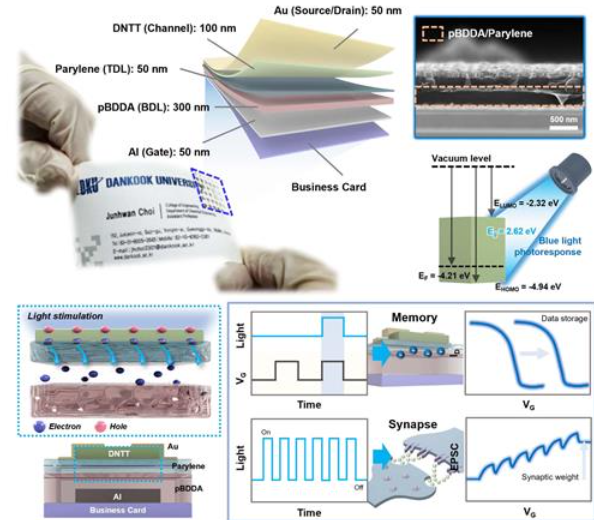
SEOUL, August 06 (AJP) - A research team at Dankook University in Seoul has developed a next-generation artificial intelligence semiconductor that mimics the human brain by learning through light, the university announced Wednesday — a potential breakthrough in the emerging field of neuromorphic computing.
Led by Professor Choi Jun-hwan of the Department of Chemical Engineering, the team engineered a neuromorphic chip that replicates the structure and function of biological neural networks.
Unlike traditional semiconductors, which separate memory and processing units, the new device integrates both into a single chip, drastically reducing power consumption and enabling the simultaneous processing of massive data flows.
“This device integrates both memory and synaptic functionalities using optoelectronic mechanisms,” said Professor Choi in a statement. “What’s more, it can be implemented on paper substrates, opening new doors for applications in wearable electronics, AI-based sensors, and security systems.”
The chip operates on the principles of synaptic learning, with photonic signals triggering charge storage and processing — a method that mirrors how synapses in the human brain transmit and retain information.
Its dual-mode memory transistor is capable of both data retention and adaptive learning in response to external stimuli.
The study was conducted in collaboration with Professors Yoo Ho-cheon and Oh Se-yong of Hanyang University.
The announcement comes at a time when neuromorphic computing — which aims to replicate the cognitive processes of the brain — is attracting increasing interest from both academia and industry.
Analysts project the global market for such technologies could grow from $28.5 million this year to $1.3 billion by 2030, representing a compound annual growth rate of nearly 90 percent.
Key drivers include the rise of edge computing, Internet of Things (IoT) applications, and autonomous systems, all of which require efficient, real-time data processing at low energy costs — areas where neuromorphic devices excel.
Copyright ⓒ Aju Press All rights reserved.




